
Shared mobility companies Bird and Micromobility.com (formerly Helbiz) stormed onto the scene by introducing innovative and convenient transportation solutions, capturing the attention of urban dwellers worldwide.
However, as the micromobility industry enters a more mature phase, companies like Bird and Micromobility.com continue to grapple with obstacles when it comes to attaining financial stability. This has prompted them to reassess their excessively ambitious expansion strategies.
What factors contribute to these challenges, and what implications does this hold for the industry as a whole? Could local micromobility ventures provide a superior solution to meet the increasing demand for these services? Let's delve further into the financial predicament of Bird and Micromobility.com to gain a better understanding.
Bird: downsizing and struggles in the stock market
Established in 2017, Bird is a micromobility company that provides electric transportation solutions in the USA and Europe. Their range of shared vehicles includes e-scooters and e-bikes. The company also sells vehicles to distributors, retailers, and direct customers. With its headquarters located in Miami, Florida, Bird currently employs 425 individuals and operates in 105 cities.
Recently, Bird's first-quarter 2023 financials revealed challenges in maintaining ridership and revenue. Despite implementing cost-cutting measures, the company's performance failed to convince investors of its ability to achieve profitability – the company's stock plummeted nearly 19% after announcing its first-quarter earnings.
In 2022, Bird faced a challenging year. The company announced plans to completely exit Germany, Sweden, and Norway, as well as wind down operations in numerous other markets, primarily small to mid-sized, across the U.S., Europe, the Middle East, and Africa. They also reduced their staff by 23%.
Despite a positive revenue increase of 12.06% in 2022, the company faced substantial losses totaling $358.74 million, marking a significant 66.9% increase compared to 2021. The challenges continued in 2023 as Bird witnessed a decline in rides and deployed vehicles. With a net loss of $44.3 million recorded at the end of Q1 2023, it’s likely that the company will continue to downsize its operations.
Micromobility.com: similar woes despite the acquisition of Wheels and rebranding
Founded in 2015 and headquartered in New York, Micromobility.com delivers micromobility services in Italy, the United States, and Singapore (43 cities in total), which include e-scooters, e-bicycles, and e-mopeds. It also operates Helbiz Kitchen, a delivery-only ghost kitchen restaurant, and the Helbiz Live streaming platform. The company currently employs 284 people.
In 2023, the company, formerly known as Helbiz, underwent a rebranding and transformed into Micromobility.com Inc. This rebranding coincided with the plans to launch retail stores across the United States.
In 2022, Micromobility.com successfully completed its acquisition of Wheels, a shared micromobility operator, along with promises to its investors that the merger would lead to a doubling of annual revenue and facilitate the path to profitability. The company set its sights on capitalizing on Wheels' extensive user base of 5 million riders and venturing into untapped markets.
Despite these hopes, Micromobility.com experienced less than stellar financial results in 2022. The company achieved a revenue of $15.54 million, indicating a 21.07% growth compared to the previous year's $12.83 million. However, the company also incurred losses amounting to -$82.07 million, reflecting a 13.3% increase compared to 2021.
In 2023, Micromobility.com announced a reverse stock split to meet Nasdaq Capital Market's minimum bid price requirement and make their common stock more attractive to investors. This move didn't come as a surprise, considering that the company received a delisting warning from Nasdaq in 2022. Coupled with its enduring track record of operating losses and negative cash flows over time, the overall outlook of the company's financial performance is rather discouraging.
Why are Bird and Micromobility.com facing financial difficulties and exiting markets?
The difficulties faced by Bird and Micromobility.com can be partly explained by their venture capital-backed business model. They witnessed swift expansion while hemorrhaging substantial amounts of money. And the more they expanded, the more money they bled. Now, it’s unsurprising to witness their heavily subsidized business models shifting their priorities from aggressive growth to mitigating losses and striving for profitability.
In recent years, there has been a surge in the popularity of shared mobility special purpose acquisition companies (SPAC). These companies are created solely for the purpose of raising capital through an initial public offering and have no commercial operations of their own. The ultimate goal of a SPAC is to acquire or merge with an existing company.
Financial struggles have become a common theme among shared mobility SPACs This can be attributed to the rush of companies going public without first establishing a sustainable business model – and Bird and Micromobility.com are no exception to this trend. The challenges faced by these companies emphasize the significance of building a strong and viable foundation prior to entering the public market.
The relentless pursuit of expansion has proven to be an ineffective strategy. For instance, some experts suggest that Bird's decision to outsource its operations to franchises made it harder to persuade cities and secure contracts. Their emphasis on breadth rather than depth resulted in a lack of understanding regarding local communities and the nuances of local legislation. As a result, major players like Bird and Micromobility.com have been withdrawing their fleets from “less profitable” cities.
The soaring shared micromobility market: a golden opportunity for local entrepreneurs
According to a McKinsey study, the shared micromobility market has the potential to reach a staggering $50 billion to $90 billion by 2030, with an estimated annual growth rate of approximately 40% between 2019 and 2030. By 2030, shared micromobility could constitute around 10% of the overall shared mobility market.
In this context, the recent financial challenges faced by Bird and Micromobility.com should not be seen as indicative of a bleak future for the entire industry. Instead, these setbacks highlight the inherent unsustainability of aggressive and expansive business models within the shared micromobility landscape.
Local operators with smaller ground teams enjoy a notable edge over companies like Bird and Micromobility.com. By focusing on underserved markets and having an intimate understanding of their communities, these operators can deliver superior service while maintaining lower costs and stable profit margins.
Returning to Bird's Q1 2023 financial report, they also reported 0.9 rides per deployed vehicle per day. Now, let's compare this figure to other operators. We conducted a survey involving two EU-based operators that make use of Atom Mobility:
- Operator 1: With a fleet of 4,000+ vehicles across over 10 cities, they recorded an average ride per vehicle of 0.9 in Q1 2023
- Operator 2: Operating in a single city with a fleet of 200 vehicles, they achieved an average ride per vehicle of 2.7 in Q1 2023
As fleet sizes increase, the average ride per vehicle tends to decrease, as seen with Operator 1 and Bird. However, the figure from Operator 2 highlights the potential for local operators to thrive in underserved cities that larger shared mobility companies may neglect.
We have seen examples of this – Go Green City, a Swiss electric moped-sharing company, presently provides its services in Zurich and Basel. Their small, tightly-knit team prioritizes local knowledge, enabling them to operate with enhanced flexibility and agility – a level of service that larger companies like Bird or Micromobility.com will find challenging to match. Overall, more than 100 projects have successfully launched their shared mobility ventures with Atom Mobility's assistance, operating in over 140 cities across the globe.
As the desire for shared micromobility services grows – with a focus on community safety and the ethical integration of these modes of transportation into the overall urban transit system – it seems that local operators have a distinct edge over large multinationals.
Click below to learn more or request a demo.
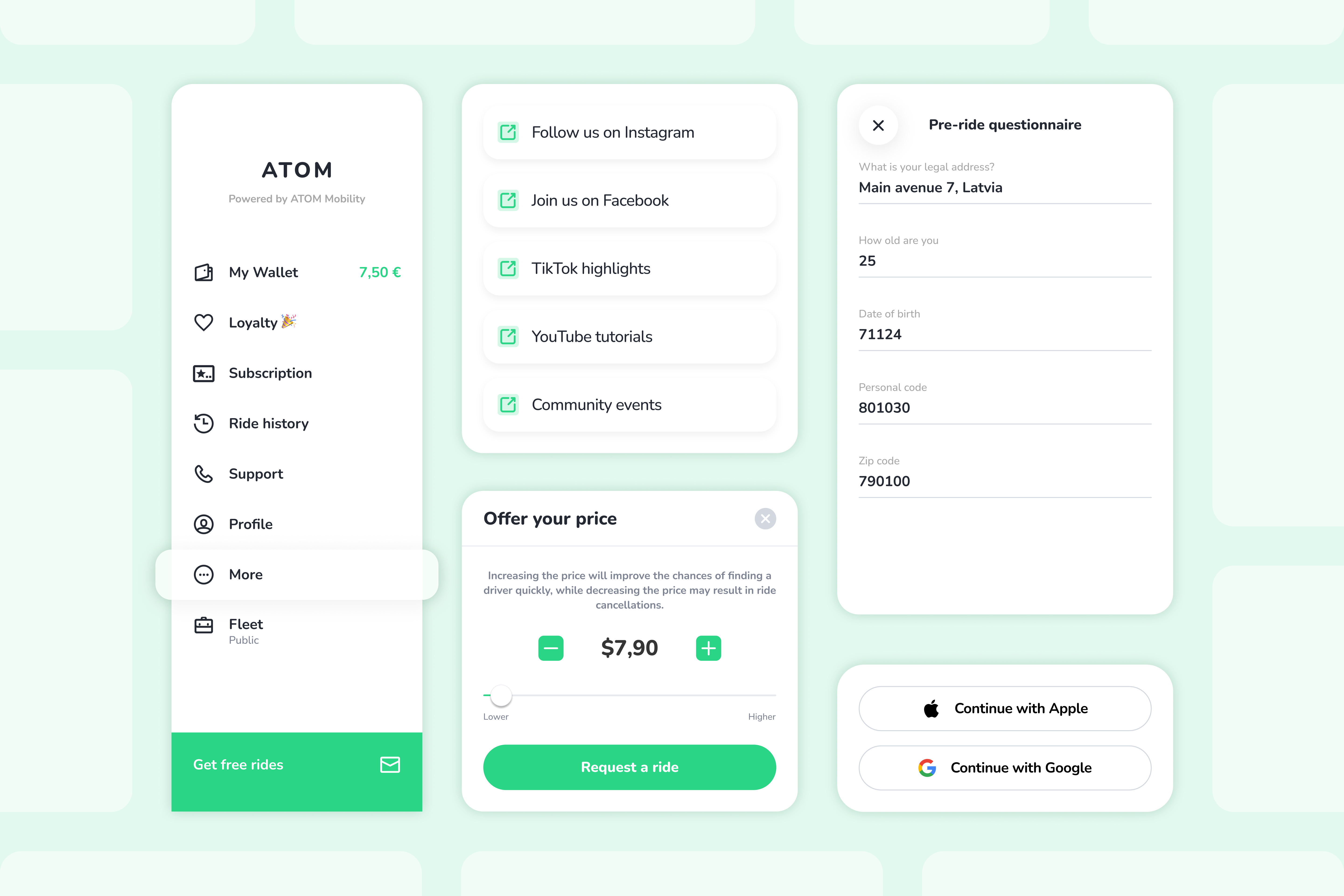
🚀📱2025 was all about automating more and reducing friction across mobility. ATOM Mobility introduced OpenAPI, new sign-in flows, a rental web-booker, smarter fleet automation, and a wide range of new hardware and payment integrations. A faster, more flexible, more scalable mobility platform - built for operators who want to grow.
2025 has been a defining year for shared mobility, digital rentals, and ride-hailing. Competition is stronger, operational costs are rising, and users expect instant, reliable digital experiences. Operators who succeed are the ones who automate more, reduce friction, and stay flexible with hardware, payments, and integrations.
This year, ATOM Mobility shipped a series of features designed to help operators achieve exactly that:
grow revenue, reduce costs, improve fleet quality, and scale into new markets with less complexity.
Here are the 10 most impactful (out of more than 70) features ATOM Mobility released in 2025, and why they matter.
1. OpenAPI (supported by all 3 modules - vehicle sharing, digital rental and ride-hail)

The launch of ATOM’s OpenAPI marks a major step forward for operators seeking greater flexibility, automation, and integration possibilities.
What it is
A fully documented API layer allowing operators and partners to build custom flows, integrations, booking systems, analytics dashboards, or MaaS connections on top of ATOM Mobility.
Who it helps
All verticals: micromobility, car-sharing, moped sharing, rentals, ride-hail, and enterprise partners.
How it works
OpenAPI enables third-party developers to build on top of the ATOM Mobility infrastructure, allowing seamless integrations with external apps, internal tools, and automated workflows. With OpenAPI, operators can extend their service in almost any direction: a partner app (like FreeNow or Uber) can show your vehicles, unlock them, and process payments on your behalf; or internal systems can trigger automated actions - such as sending a survey email after every completed ride. The possibilities are nearly unlimited, giving operators full flexibility to innovate and scale however they choose.
Why it matters
- Enables deeper integrations with partners and local platforms
- Supports custom business logic and automations
- Makes it easier to enter new markets with local-specific requirements
- Opens the door to MaaS distribution and enterprise collaborations
2. Sign-In with Apple & Google - A smoother first-time user experience (all modules)

Across mobility, the registration flow is often the first point of friction. ATOM Mobility introduced modern authentication options to simplify onboarding.
What it is
One-tap sign-in using Apple ID or Google Account instead of relying solely on SMS verification.
Who it helps
All operators - especially those targeting tourists, or markets with unreliable SMS delivery.
How it works
When creating a new account or logging in, users can choose to log in/register using Apple ID or Google Account - this will allow account creation in just 2 taps.
Why it matters
- Faster user onboarding experience -> happier rider -> more frequent rides
- Fewer SMS-related issues (and lower SMS related costs) and failed verifications
- Reduced support load from login problems
3. Multipurpose side menu button (all modules)

What it is
A customizable slot in the app menu where operators can add up to five external links - websites, ecommerce pages, tour pages, extra FAQ pages, social media, partner offers, etc.
How it works
- Enable in Settings → System preferences → External links
- Add titles + URLs
- Links automaticaly appear in the app under “More”
Value for operators
- A space where you can display any information you consider important for the user
- Supports cross-promotion and partnership campaigns
- Allows communication updates without app releases
- Creates additional monetisation opportunities, such as launching your own e-commerce or merchandise shop
4. Pre-ride questionnaire (all modules)
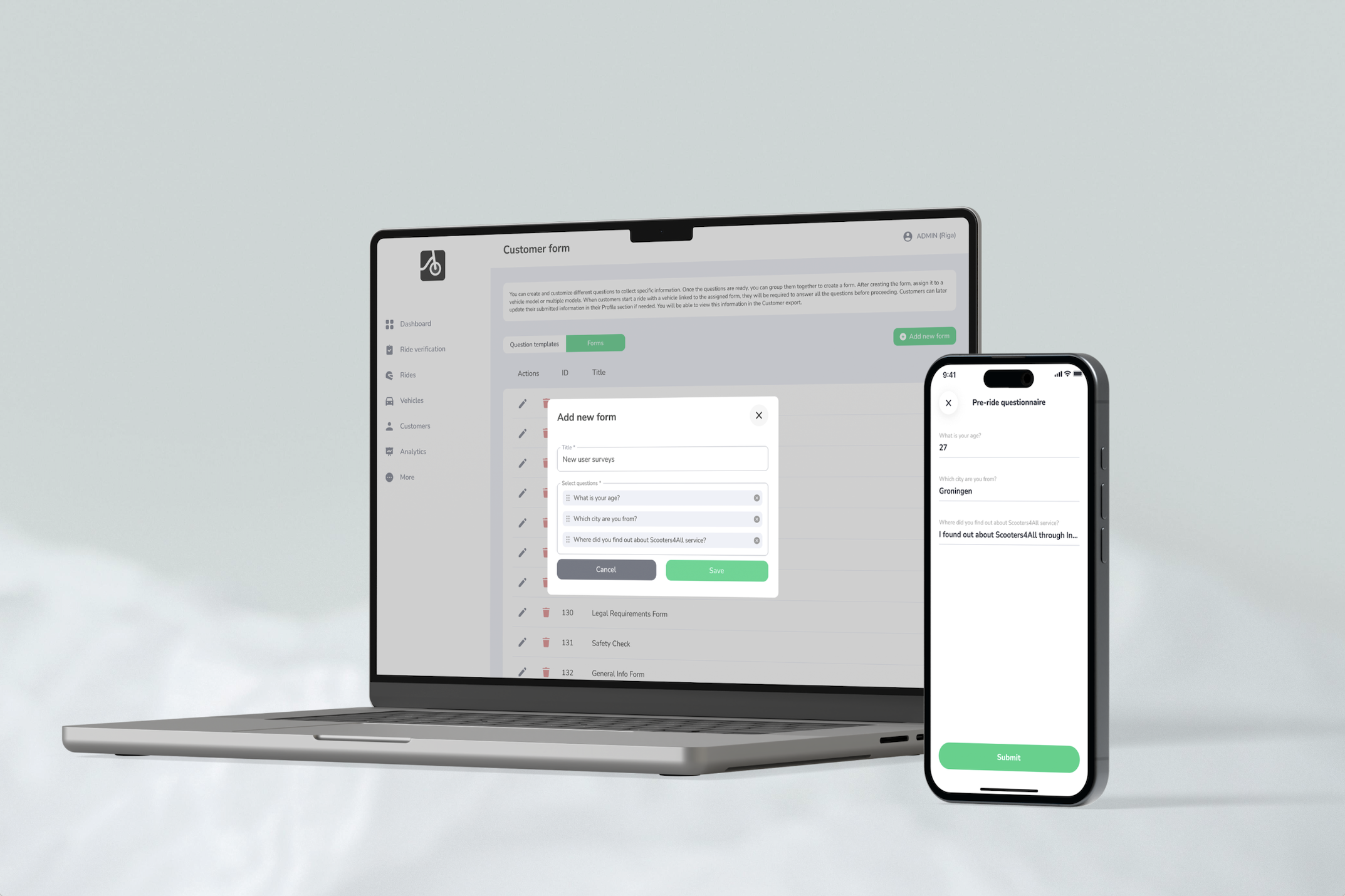
What it is
A form that users must complete before starting a ride - ideal for compliance, reporting, invoicing, or gathering important data.
Who it helps
Operators needing regulatory data, reporting, consent collection, or structured user feedback.
How it works
Create a question (or several) in “Customer form” -> Group questions into a pre-ride form -> Assign a form to specific vehicle models/classes.
Once completed, the customer must answer predefined questions before starting the ride. Their responses appear in both customer and ride exports. For example, you can ask for a personal ID code, legal address, or any other required information.
Value for operators
- Helps meet regulatory or municipal requirements
- Ensures correct invoicing details
- Provides a structured way to capture essential user data
5. Driver revenue auto-distribution (Stripe & Adyen, ride-hail)
What it is
Automatic payout splitting: driver earnings go to the driver’s payout account, and platform commission goes to the operator - all processed automatically after each ride.
Who it helps
Ride-hail operators using Stripe or Adyen.
How it works
- Operator has a Stripe/Adyen merchant account
- Drivers onboard as payout recipients
- After completed rides, payouts split automatically
- Supports mixed payment methods (cash and non-cash)
Value for operators
- Reduces manual payout work
- Minimises accounting errors
- Improves driver experience through transparency and instant pay out
- Makes scaling easier when the driver base grow
6. Set a manual vehicle location (vehicle sharing & digital rental)
What it is
A tool to override or manually set a vehicle’s GPS position when IoT data is unavailable (no IoT placed on the vehicle at all) or inaccurate.
Who it helps
Operators with underground parking, poor GPS coverage, or long-term rentals without IoT can use this setup. A typical scenario is long-term bike rental without IoT: the user completes ID verification, payment, and booking in the app, then sees the vehicle assigned to a predefined location (station) where it is picked up and later returned. This serves as a workaround for vehicles that do not support IoT or where adding IoT device is too costly.
How it works
Edit vehicle → update “Location” field. The system assumes this as the correct coordinate. Works for individual vehicles or via mass import.
Value for operators
- Avoids user frustration when vehicles appear in the wrong location
- Supports business modesl with fleets operating without IoT devices
7. Offer your price - rider-controlled pricing (ride-hailing)
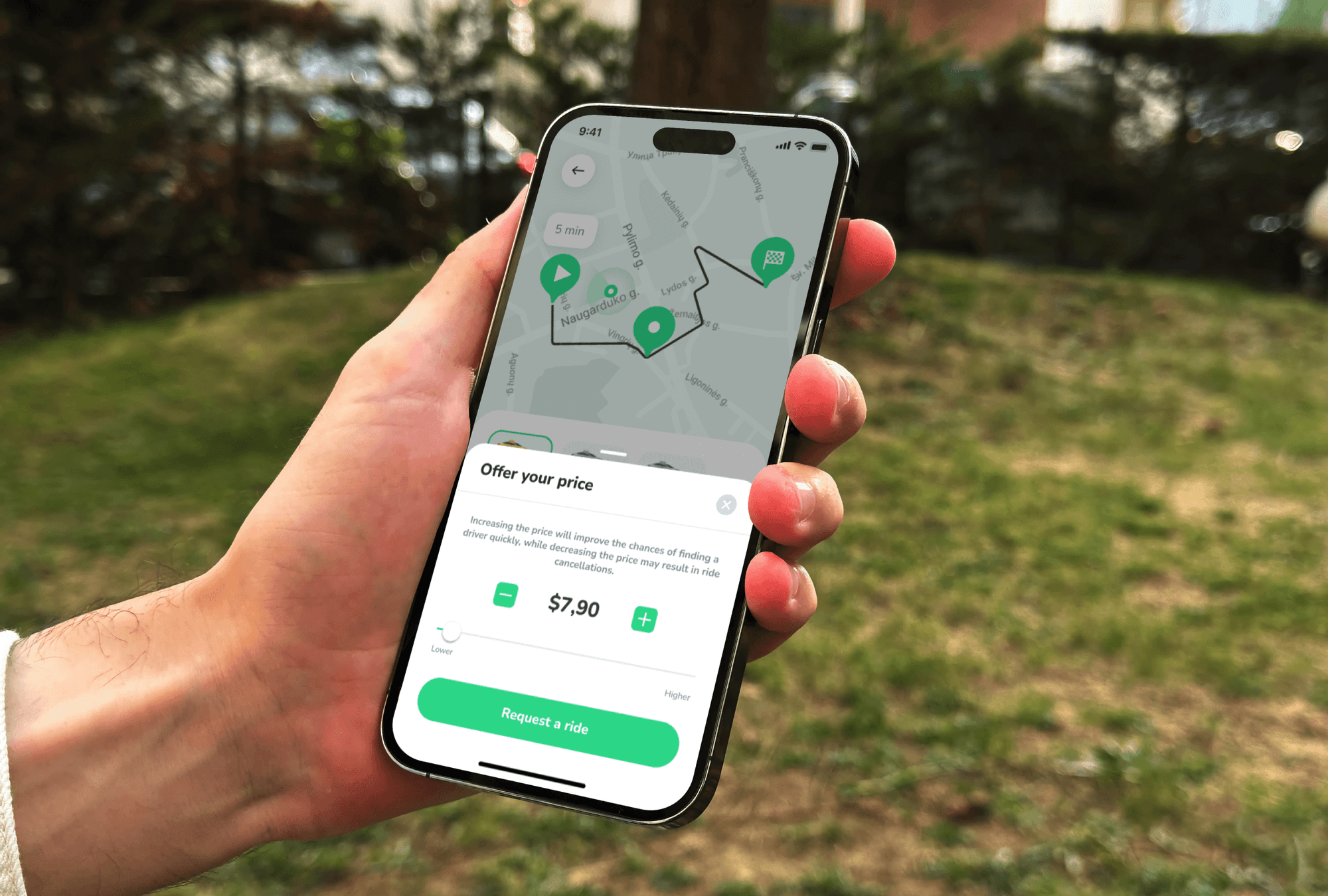
What it is
A flexible pricing feature that lets passengers propose their own fare - higher or lower than the system-calculated price, within limits set by the operator. Drivers see the offer instantly and can choose to accept or reject it.
Who it helps
Ride-hailing operators in competitive, price-sensitive, or highly dynamic markets where price shifts demand quickly.
How it works
When requesting a ride, the user selects “Offer your price”. A slider or +/– buttons allow them to adjust the fare within operator-defined boundaries. If the user lowers the price, the app explains that the offer may reduce the chance of driver acceptance.
Drivers see a clear banner showing whether the rider is offering more or less than the standard fare. Drivers can accept or decline based on their preference.
Operators can enable or disable the feature per vehicle class.
Why it matters
- Creates a clear differentiator in markets dominated by fixed-fare competitors
- Helps convert riders who compare multiple apps before booking
- Gives drivers more control over their earnings and decisions, improving transparency and satisfaction
- Supports better ride matching during off-peak hours or less profitable routes
- Allows operators to experiment with more flexible pricing strategies without changing their core fare model
8. Web-booker for digital rental - frictionless bookings directly from your website (digital rental)
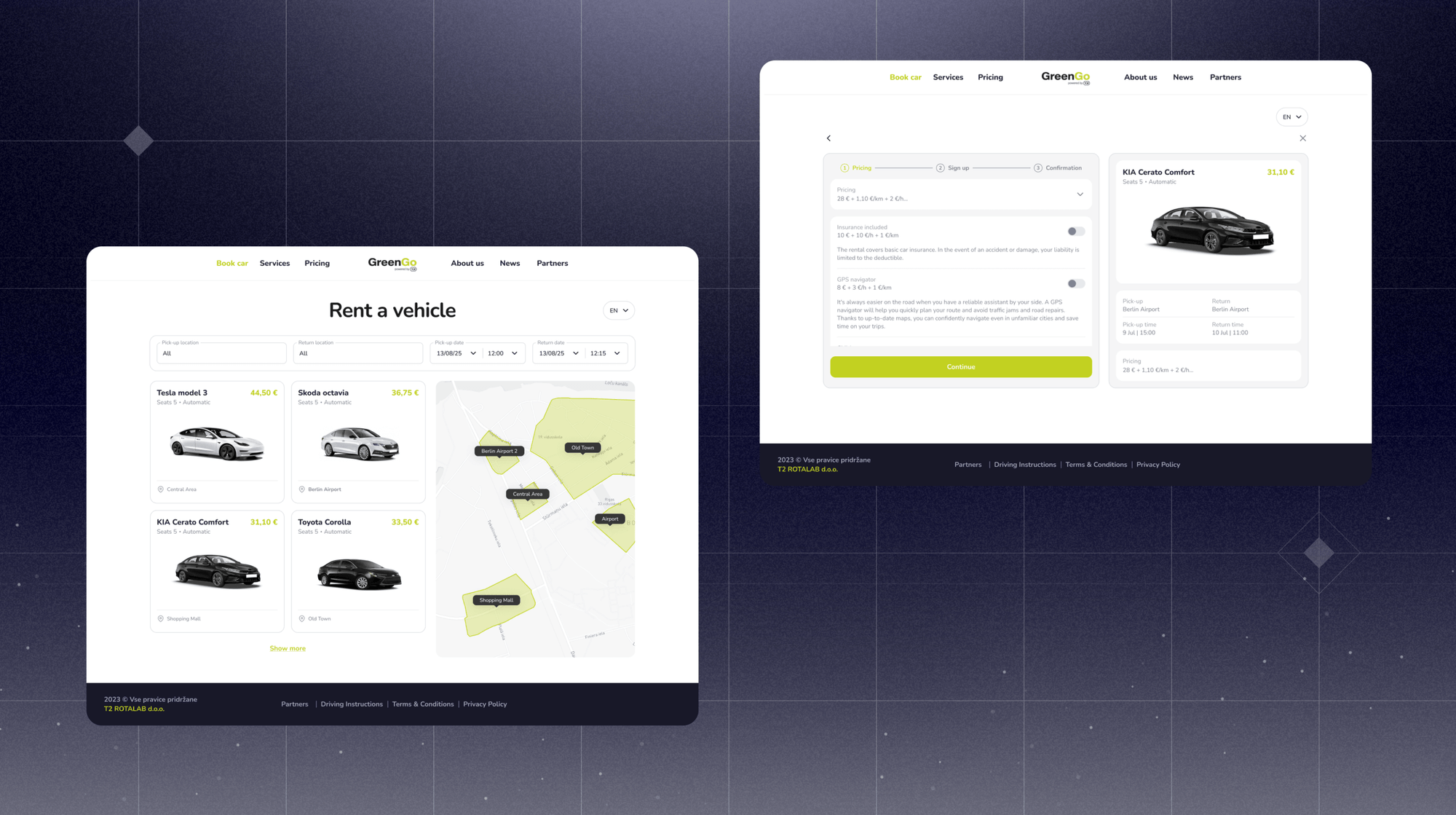
What it is
A lightweight, embeddable booking widget that lets customers reserve a rental vehicle directly from your website - without installing the mobile app first. It’s designed to capture spontaneous bookings, convert website visitors, and unify online and in-app rental experiences.
Who it helps
Car, moped, and bike rental operators, as well as hospitality and tourism partners such as hotels, resorts, coworking spaces, real-estate developers, and travel service providers.
How it works
Every operator receives a branded rental URL: merchantname.atommobility.com/rent
Users select their area, vehicle type, and rental period directly in the widget. Once confirmed and the account created, the booking syncs automatically into the ATOM Mobility dashboard. Customers see a confirmation screen with a QR code to open the booking in the mobile app. Payment, ID verification, and vehicle unlock actions are completed in the ATOM Mobility-powered app before the trip begins.
The widget automatically adapts to the operator’s brand color for a visually seamless integration. In the dashboard, each booking displays its source: App, Web, or Booker - helping operators track where rentals originate.
Why it matters
- Converts first-time users browsing your website into paying customers - without forcing an app install
- Enables plug-and-play rental flows for partners such as hotels, rental desks, cafés, coworking spaces, or tourist spots
- Supports QR-based rental journeys from physical locations
- Reduces friction for users who want a fast, simple booking experience
- Helps operators expand distribution with minimal effort, unlocking new sales channels
- Unifies online and mobile rental flows under a single backend and operational system
Demo: https://app.atommobility.com/rental-widget
9. Vehicle status change automation (vehicle sharing & digital rental)

What it is
Bad user experiences often happen when several riders encounter the same faulty vehicle. ATOM Mobility now prevents this automatically. Automation rules detect problematic vehicles and instantly set them to “Needs investigation,” hiding them from the user app so the operator can inspect the vehicle before the next rider can take it.
Who it helps
Sharing and rental operators managing medium or large fleets.
How it works
System monitors low ratings, repeated short rides, and user reports. When triggered, it:
- creates a maintenance task
- switches vehicle status
- hides the vehicle from users
Why it matters
- Prevents recurring complaints from the same issue
- Reduces refunds and reputational damage
- Helps maintain a healthier, more reliable fleet
- Automates routine operational checks
10. New integrations (10) - a broader ecosystem for hardware, payments & compliance (all modules)
What was added
2025 brought a wave of new integrations that give operators more flexibility in choosing hardware, payments, charging, and regulatory tools. What was added:
- Ridemovi IoT
- Wave payment gateway
- Linka smart lock support
- 2Hire IoT
- Kuhmute charging stations
- Eskiz.uz OTP service
- Atmos payment gateway
- Chiron API (regulatory)
- Fitrider charging station
- Azericard payment gateway
Why it matters
- Easier entry into markets with local payment or OTP requirements
- More hardware options for scooters, bikes, e-bikes, and cars
- Better compatibility with charging infrastructure
- Reduced integration time when expanding
- Support for regulatory compliance where required
These ten features represent only a small selection of what we delivered this year. In total, our team shipped more than 70 new features, dozens of integrations, and countless small improvements that quietly make the platform faster, more stable, and more enjoyable for operators and end-users every single day. Behind each release is a team focused on one idea: helping entrepreneurs build stronger, more efficient, and more profitable mobility businesses.
And we’re just getting started.
Our 2026 tech pipeline is already packed with ambitious and exciting solutions - from deeper AI-powered automation to smarter fleet intelligence and new tools that will change how operators run mobility services. We're looking forward to pushing the industry even further together.
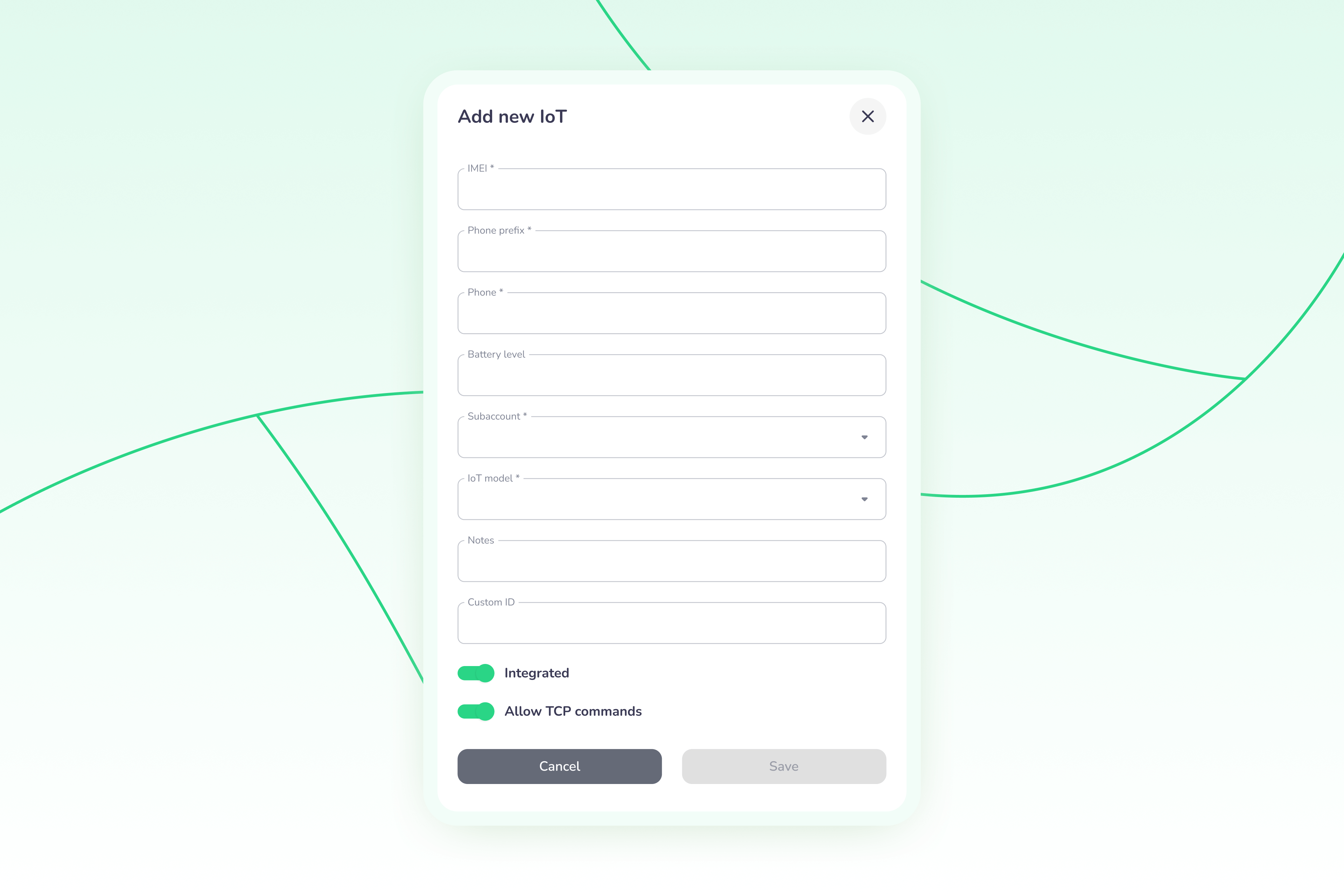
🛴📡 That smooth ride you just took? It was powered by a whole ecosystem of hardware and software you never saw. From IoT modules in the vehicle to real-time dashboards and rider apps, shared mobility relies on a solid tech stack to stay online, secure, and profitable.
You open an app, spot a scooter on the map, and within seconds it unlocks with a click. You ride off, expecting the battery to be charged, the brakes to work, and the whole process to feel effortless. From the very first ride, shared mobility set the standard: vehicles should always be nearby, ready to go, and the whole experience should feel seamless. What most riders never think about, though, is the complex mix of hardware and software working in the background to make every smooth ride possible.
Why the tech matters
Technology is the baseline for the shared mobility business model. Every ride depends on it. Vehicles need IoT hardware to lock, unlock, and report their status. Connectivity has to be stable so operators always know where assets are and what condition they’re in.
IoT, or the Internet of Things, is the technology that connects physical devices – like scooters, bikes, or cars – to the internet. Each vehicle contains a small embedded device (the IoT module) that sends and receives data through mobile networks. This connection allows operators to remotely control key functions such as locking, unlocking, location tracking, and firmware updates. In short, IoT is what makes a vehicle “smart” and manageable at scale.
On the software side, riders expect apps that feel instant and intuitive, while operators rely on dashboards for fleet health, pricing, and support. Add in the realities of theft, battery swaps, downtime, and local regulations, and the stakes become clear. Without a reliable tech stack, even small failures – a scooter that won’t unlock or a payment that stalls – can quickly break user trust and hurt the business.
Where it began
Over the years, several manufacturers have entered the shared mobility IoT space, offering different hardware configurations, network technologies, and integrations. Companies like Teltonika (Lithuania), Comodule (Estonia), Invers (Germany), OMNI (China) and others produce modules compatible with various vehicle types and connectivity standards. Each provider focuses on specific strengths – some prioritize energy efficiency or compact design, others emphasize global coverage or advanced diagnostics. Choosing between them depends on the type of vehicles, operational scale, and software ecosystem an operator plans to use.
Our partner, Comodule was already developing IoT for micromobility when the Corona pandemic hit. Overnight, cities shifted and everyone needed their own safe, private way to move around. Shared scooters and bikes suddenly went from being a niche service to an essential part of urban transport, and the demand for IoT skyrocketed. For IoT manufacturers, it meant long days in development and manufacturing, pushing hard to deliver reliable devices at scale for brands like Uber, Lime, and Hive.
That sharp rise in demand forced them to grow quickly and gave valuable experience in building technology that could perform under real pressure. Fleets that trusted Comodule devices had a backbone they could rely on: vehicles that could be located, unlocked, secured, and managed internationally. Just as important, the IoT had to integrate seamlessly with software systems (like ATOM Mobility). That’s why building robust API and SDK tools became critical – enabling operators to connect hardware to their platforms, control fleets in real time, and access the information needed to keep moving.
IoT as the brain of the vehicle
Inside every connected scooter or bike sits a IoT module, the “brain” that links the vehicle to the cloud. It connects through cellular networks, constantly sending data about location, speed, and battery status. When a rider taps “unlock” in the app, that command travels through the cloud to the module, which triggers the electronic lock and wakes up the vehicle. The same connection allows operators to set geofenced no-parking zones, push over-the-air updates, or activate a sound alarm if the scooter is being tampered with. Battery sensors inside the module report charging cycles and health, so operators know exactly when a pack needs to be swapped or replaced.
All of this data is streamed in real time to the fleet management system, giving providers the ability to monitor hundreds or even thousands of vehicles simultaneously. For operators, these capabilities mean higher uptime, faster theft recovery, and precise control over the entire fleet – the difference between running a struggling operation and a profitable one.
Selecting the right IoT hardware is a long-term decision that affects the entire fleet’s performance. Operators should evaluate network compatibility (2G/4G/5G/eSIM) and regional coverage, integration options such as open APIs and SDKs, and reliability under different weather conditions. Battery efficiency, after-sales support, firmware update policies, and compliance with standards like CE or FCC also matter. In short, IoT isn’t just a component – it’s the operational backbone of any shared mobility business.
Rising expectations in the market
As shared mobility matured, the bar kept getting higher. New scooter generations came with swappable batteries, sturdier frames, and better onboard electronics. Riders got used to apps that respond instantly, process payments in seconds, and show vehicle availability with pinpoint accuracy.
At the same time, competition rose, not only from global players but also from smaller, local operators launching fleets in their own cities. For these companies, reliable hardware was no longer enough. They needed the software layer that connects everything: smooth rider apps, powerful operator dashboards, and analytics to make smarter decisions. Yet many lacked the time and resources to build software on their own.

Software as the missing piece
As fleets grew and competition intensified, operators realized they did not have time or funds to develop their own software layer. They needed a market-ready platform that ties everything together – apps that riders enjoy using and dashboards that give operators full control of their business. That’s where solutions like ATOM Mobility come in.
Platform connects directly with IoT through APIs and SDKs, so every unlock command, error code, or battery update flows instantly between the rider’s app and the operator’s dashboard. Almost any company can launch a fleet with this stack – from large-scale operators to small, local newcomers.
The power of integration
When hardware and software work seamlessly, the rider experience feels effortless. A simple tap in the app sends a command through the cloud to IoT, which unlocks the vehicle and streams live data back in milliseconds. The operator instantly sees the vehicle’s status in the dashboard: battery level, GPS position, and any error codes.
If the scooter leaves a geofenced area, the system reacts automatically. If maintenance is needed, the alert is flagged before it becomes a breakdown. By combining the hardware with software, fleet providers get one complete ecosystem – a stack built to keep vehicles online and users satisfied.
From seamless rides to smarter cities
From a rider’s perspective, shared mobility should always “just work.” That won’t change. But the technology stack behind it is becoming more sophisticated every year. Stricter regulations demand safer and more transparent services, while cities are pushing for integration into broader Mobility-as-a-Service platforms. IoT and software together provide the data and control that operators need, not only to stay compliant but also to improve fleet efficiency and sustainability and to provide insights for city planning.
For users, that sophistication will translate into something simple: services that are more reliable, safer for everyone on the road, and smarter – with data from real-world usage helping to shape better vehicles, better infrastructure, and better cities in the future.


